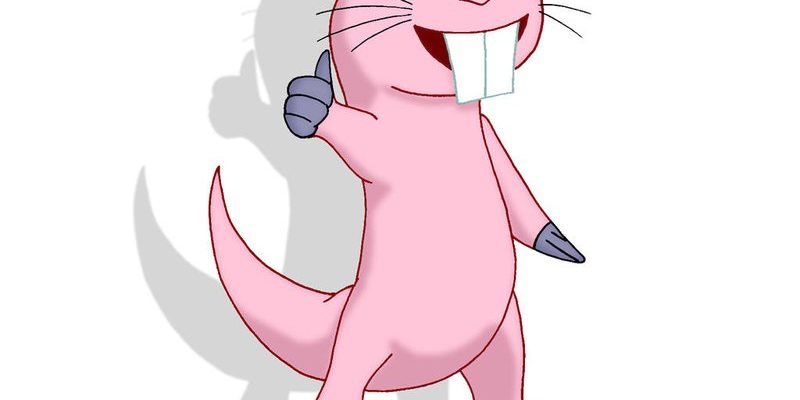
But what’s really fascinating is how these peculiar rodents evolved into the unique beings they are today. The story of the naked mole rat’s evolutionary history isn’t just about their odd looks; it’s about survival, adaptation, and a bit of mystery that continues to intrigue scientists. Let’s dive into this captivating tale and uncover how these exceptional animals became the resilience champions of the underground.
Origins of the Naked Mole Rat
The naked mole rat’s journey began around 30 million years ago. These animals belong to the family Bathyergidae, which includes a variety of other subterranean rodents. Their ancestors roamed the lands of Africa, but unlike many other rodents, naked mole rats took a path less traveled—digging deeper into the earth to find safety from predators and extreme weather.
Living underground led to some interesting adaptations. For example, their skin became hairless due to a lack of sunlight and a need to conserve moisture in their arid habitats. Imagine living in a dark, humid cave—having extra fur would be like wearing a heavy coat in a sauna! This loss of fur, while unusual, allowed naked mole rats to thrive where others might struggle.
Another fascinating aspect of their origins is their social structure. Naked mole rats are among the few eusocial mammals, which means they live in large colonies similar to bees or ants. This group lifestyle is believed to be a key factor in their success, allowing them to work together to dig extensive tunnel systems and protect one another from threats.
Physical Adaptations
Naked mole rats are not just quirky in their looks; their bodies are brilliantly adapted for life underground. Let’s break down some key features:
- Teeth: Their front teeth are especially noteworthy. These protruding incisors are perfect for burrowing and gnawing through tough roots and tubers, which form a significant part of their diet. Interestingly, they can eat without using their lips, keeping dirt away from their teeth.
- Skin: As mentioned, their lack of fur helps regulate temperature in the warm tunnels. The wrinkles in their skin also allow them to squeeze through tight spaces, making it easier to navigate through their tunnels.
- Vision: While they do have eyes, their eyesight is quite poor. Instead, naked mole rats rely on their well-developed sense of touch and smell, helping them find food and navigate in the dark.
These adaptations are not mere quirks; they’re essential to their survival. Naked mole rats have virtually no predators underground, allowing them to thrive in their unique ecosystems.
Social Structure and Behavior
If you think about the typical mammal, you might picture animals living alone or in small family groups. Naked mole rats throw that idea out the window. Their colonies can consist of 20 to over 300 individuals, all working together. Their social structure is incredibly matriarchal, with one queen leading the pack. This queen reproduces, while the rest of the colony digs, forages, and cares for the young.
Here’s the thing: this unique social behavior comes with its own challenges. The queen will often engage in aggressive behaviors to maintain her status, such as fighting off potential rivals. This strict hierarchy ensures that the colony remains cohesive and focused on survival.
Moreover, the way they communicate is quite sophisticated. Naked mole rats utilize various vocalizations and even scent marking to convey messages within their dark tunnels. Isn’t it wild to think about a bustling community, all underground, where every member has a role and communicates without being able to see each other?
Thriving in Harsh Environments
Naked mole rats have adapted to some of the harshest environments on the planet, particularly in the dry regions of East Africa. Living in these conditions means they’ve developed some remarkable abilities.
One standout feature is their ability to withstand low oxygen levels and high carbon dioxide levels. While most animals would struggle in such environments, naked mole rats can live in areas where oxygen levels are as low as 6 percent—a feat that would be fatal to many other mammals. Researchers believe their cellular chemistry is the key, allowing them to function efficiently in these conditions.
Additionally, naked mole rats are largely resistant to cancer and have an exceptional lifespan for their size—living up to 30 years. This longevity is intriguing scientists, who hope to uncover the secrets behind their unique biology. Who knows? Their adaptations might even provide insights into human health, especially in cancer research.
Research and Conservation
As intriguing as naked mole rats are, their unique characteristics make them a prime subject for research. Scientists study them not just to unravel their evolutionary history but also to learn more about social structures, cancer resistance, and even pain perception. There’s so much we can learn from these little creatures!
Conservation efforts are crucial for keeping naked mole rats thriving in the wild. Habitat destruction poses a threat to their populations, so protecting their ecosystems is essential. Additionally, educating the public about their role in the environment can foster appreciation for these unique animals. After all, understanding their evolutionary history can lead to safeguarding their future.
The Naked Mole Rat: A Unique Evolutionary Story
The naked mole rat’s evolutionary history is a testament to nature’s creativity. From their social structures to their physical adaptations, every aspect of their being is a response to the challenges of their environment. They remind us that evolution isn’t just about survival—it’s about thriving in unique ways.
So, the next time you hear about naked mole rats, remember: they’re not just quirky rodents; they’re living examples of evolution in action. Whether you see them as cute, strange, or fascinating, there’s no denying that their story enriches our understanding of the natural world—and that’s something worth celebrating.

